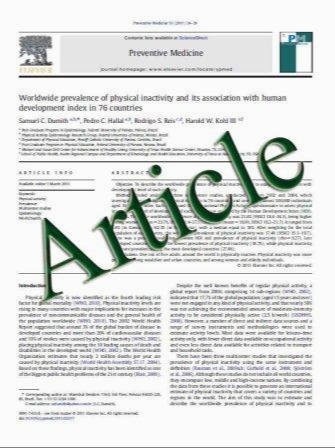New ependymal cells are born postnatally in two discrete regions of the mouse brain and support ventricular enlargement in hydrocephalus
- نوع فایل : کتاب
- زبان : انگلیسی
- مؤلف : Luis Federico Ba´tiz Antonio J. Jime´nez Montserrat Guerra Luis Manuel Rodr´guez-Pe´rez Ce´sar D. Toledo Karin Vio Patricia Pa´ez Jose´ M
- چاپ و سال / کشور: 2011
Description
A heterogeneous population of ependymal cells lines the brain ventricles. The evidence about the origin and birth dates of these cell populations is scarce. Furthermore, the possibility that mature ependymal cells are born (ependymogenesis) or self-renewed (ependymal proliferation) postnatally is controversial. The present study was designed to investigate both phenomena in wild-type (wt) and hydrocephalic a-SNAP mutant (hyh) mice at different postnatal stages. In wt mice, proliferating cells in the ventricular zone (VZ) were only found in two distinct regions: the dorsal walls of the third ventricle and Sylvian aqueduct (SA). Most proliferating cells were monociliated and nestin?, likely corresponding to radial glial cells. Postnatal cumulative BrdU-labeling showed that most daughter cells remained in the VZ of both regions and they lost nestin-immunoreactivity. Furthermore, some labeled cells became multiciliated and GLUT-1?, indicating they were ependymal cells born postnatally. Postnatal pulse BrdU-labeling and Ki-67 immunostaining further demonstrated the presence of cycling multiciliated ependymal cells. In hydrocephalic mutants, the dorsal walls of the third ventricle and SA expanded enormously and showed neither ependymal disruption nor ventriculostomies. This phenomenon was sustained by an increased ependymogenesis. Consequently, in addition to the physical and geometrical mechanisms traditionally explaining ventricular enlargement in fetal-onset hydrocephalus, we propose that postnatal ependymogenesis could also play a role. Furthermore, as generation of new ependymal cells during postnatal stages was observed in distinct regions of the ventricular walls, such as the roof of the third ventricle, it may be a key mechanism involved in the development of human type 1 interhemispheric cysts.
Acta Neuropathol (2011) 121:721–735 DOI 10.1007/s00401-011-0799-x Received: 3 August 2010 / Revised: 6 January 2011 / Accepted: 11 January 2011 / Published online: 11 February 2011


